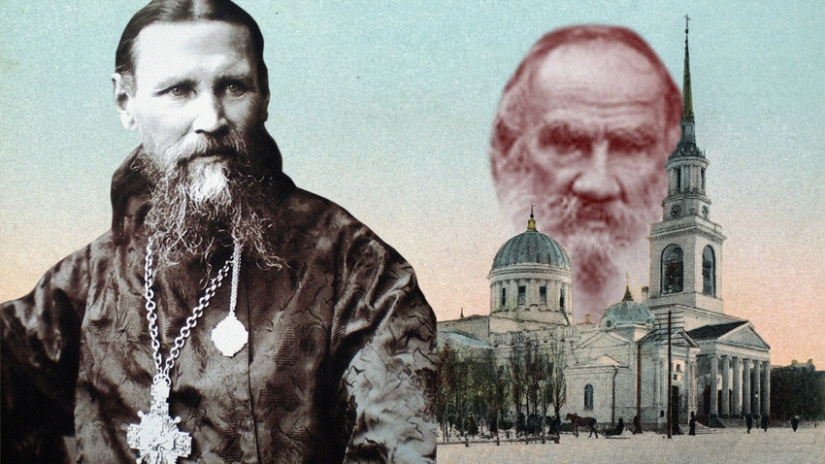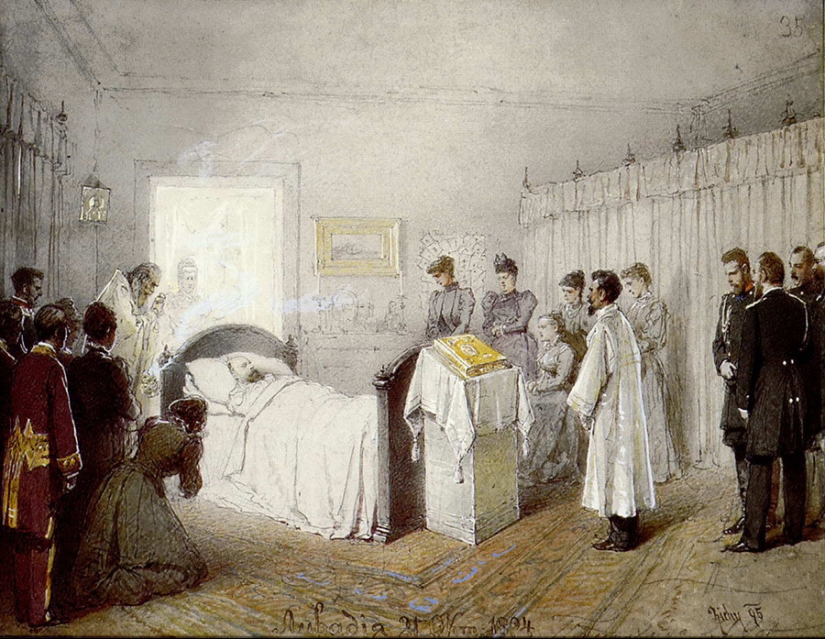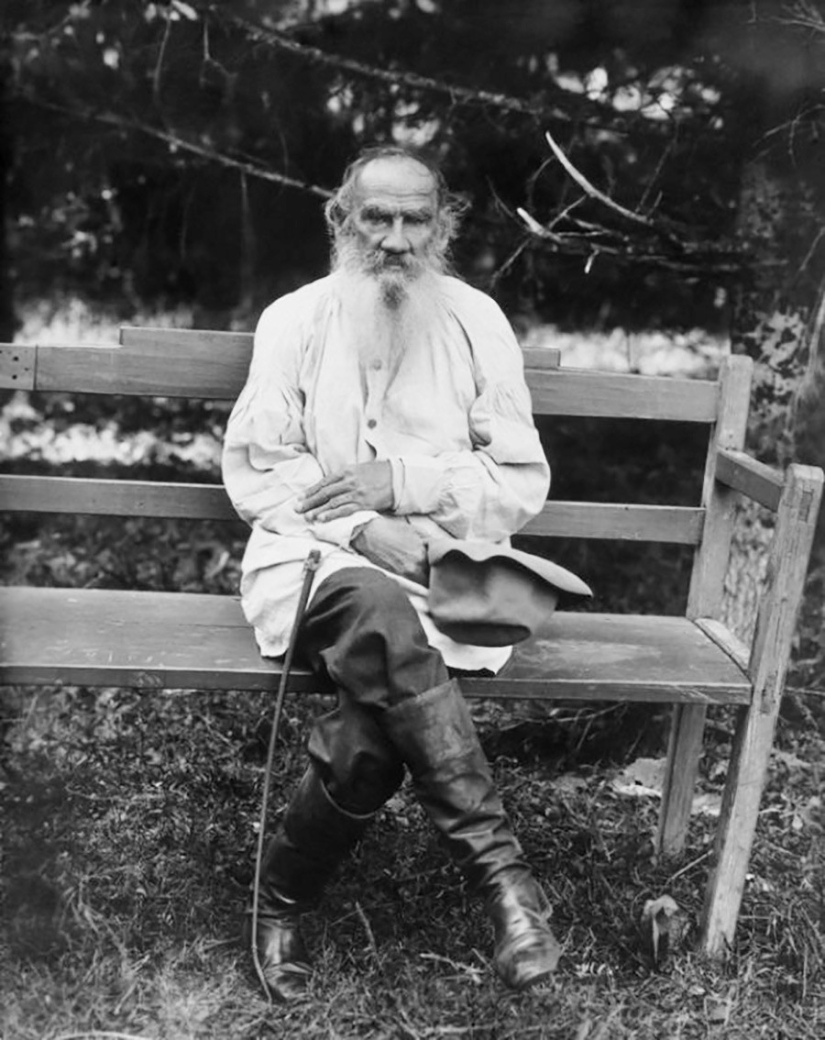John of Kronstadt: the Saint who hated Leo Tolstoy
Categories: Celebrities | History | World
By Pictolic https://pictolic.com/article/john-of-kronstadt-the-saint-who-hated-leo-tolstoy.htmlThe most famous Russian priest was revered by many as a saint during his lifetime. All residents of Russia knew about it. He was a contemporary of Tolstoy, his complete antipode and personal enemy.

It is difficult for a modern person to imagine how in the late XIX — early XX century a simple priest could be so popular that thousands of people from all over the country came to him. Such a strong magnetism was usually possessed only by the persons of the royal family.
During his lifetime, they believed in John of Kronstadt as a saint, they told about numerous healings that occurred through his prayers. The richest people of the empire donated huge sums to him, and he gave them to the faithful without a trace, living very modestly himself.

John of Kronstadt
In 1990, John was canonized. In honor of the 30th anniversary of this event, the sculptor Konstantin Chernyavsky created several monuments to the saint-and Russian charitable foundations sent them as a gift to Orthodox communities around the world. Monuments to John will be installed in Hollywood, Melbourne, Abkhazia and the native village of St. Sur in the Arkhangelsk region. In 2019, his statues have already appeared in Washington, Hamburg and Voronezh.
John was born in 1829 in the Arkhangelsk region in a very poor family. He studied at the local theological seminary, and then for good studies he received the right to study for free in St. Petersburg Theological Academy. He was an unremarkable young man, and his fellow students did not even leave any vivid memories of him. He liked to walk alone, prayed a lot…

St. Andrew's Cathedral in Kronstadt (it was destroyed in Soviet times)
In 1855, John went to serve at St. Andrew's Cathedral in Kronstadt. He got a priest's place by marrying the daughter of a local archpriest. And although Orthodox priests usually had large families, after the wedding, John informed his wife that they would live as brother and sister in the name of spiritual service.
As soon as he received a parish in the most unfavorable place near St. Petersburg, in Kronstadt, John began his ministry. Then it was a port city, where poverty, vice and debauchery were ubiquitous. He served the liturgy every day in the local church, after which he distributed alms, everything that he had.
And then he went to the houses and shacks where the sick and poor women with children huddled, while their husbands drank, worked or robbed. He sat with the children, talked to the women, gave them everything he could give. The townspeople often observed an eccentric picture — how John returned home with his hands crossed in prayer on his chest and barefoot... he had already given his boots and cassock to the suffering.
In 1859, John makes the first entry in his diary about the healing, or rather even about the resurrection of the baby. John held his little body, already cold, in his arms, he prayed and performed the sacrament of baptism — and the baby came to life.

John with one of his godchildren
In the 1860s, John already records several cases of how he healed the sick. He literally " began to ask for healing for the sick. And the Lord sent him His mercy — he recovered." And then it happened more than once, and sometimes he healed a whole group of people.
Cases of healing began to be written about in the newspapers. In 1883, an article appeared where 16 people tell about how John healed them. From that moment on, the priest's fame begins to spread throughout the country. Not the least role in the growing popularity of the priest was played by the follower who appeared with John, the "pious woman" Paraskeva Krapivina.
Under the blessed pastor, this active woman became responsible for" earthly affairs " and believed that he was worthy of more than the glory of the Kronstadt priest. Practically became his PR manager, as we would say now. In particular, she organized a fundraiser from the "grateful" for miracles and benefactors to John. Later, the richest people of the country began to donate huge amounts of money.

John of Kronstadt in the administration of the St. Petersburg city Administration
And John began to give even more to the sick and suffering — for example, he could give one sick woman a whole thousand rubles (while the monthly salary of a factory worker, for example, was 30 rubles). In addition, John could donate 50 thousand rubles for the construction of a charitable institution — a shelter, a school or a hospital. The royal family also donated huge amounts of money and rich gifts to John.
Since the 1880s, thanks to his miraculous healings and extremely emotional sermons, John has become known throughout Russia. With the help of Krapivina, he begins to go on a kind of" tours " throughout the country, meets with believers, serves in local churches and monasteries.

John of Kronstadt among the parishioners at the laying of the church in the Nikiforovskaya desert
Hundreds and hundreds of believers sought to touch or at least see the preacher. At the station, he was met by crowds of people, he was literally not given passage. He stopped everywhere briefly, but tried to heal or at least comfort and bless as many people as possible.
He made a great impression on everyone, many wrote that he looked like a meek blessed "not of this world" who appeared on this sinful earth. One of the meetings with John was recorded in her diary in 1894 by Elizabeth Diakonova, one of the first Russian feminists and not a particularly religious girl:
Even at the height of his popularity, John continued to eat almost nothing, serve the liturgy every day, take communion and have almost no personal property. All the huge money that passed through him, he distributed and sent to the needy, leaving nothing at all for himself. His wife, who was not ready to live in such asceticism, at first often complained to the church authorities that she had nothing to live with at all, because her husband gives everything away.
In 1894, John of Kronstadt was summoned to The Crimea, where the Emperor Alexander III dies. The tsar, of course, had a personal confessor, but this people's priest was most likely called out of desperation — and it was for healing. He is the only hope of the royal family. John is with the king in the last hours of his life, prays, performs rituals…

Mihai Zici. Funeral service for the deceased Alexander III in a room of the Livadia Palace on October 21, 1894 (in the picture, not John of Kronstadt, but John Janyshev, the tsar's confessor)
John does not succeed in healing the emperor. But this episode is the real peak of the priest's fame. And yet, he will no longer approach the royal family — and will only participate in the service after the coronation of Nicholas II.
Tolstoy and Kronshtadtsky were the most popular and significant personalities of the late XIX century and at the same time irreconcilable enemies.

Leo Tolstoy in Yasnaya Polyana
The late Tolstoy had his own view on religion. He did not observe and even rejected church rites, he believed that such intermediaries as priests and the church were not needed for faith. Finally, he denied the divine origin of Christ, and considers the miracles that he performed an unnecessary place in the Bible.
Such a violation of the church canons gave rise to the real anger of John of Kronstadt. The gentle, blessed priest called Tolstoy "a heretic who surpassed all heretics" and predicted to him "the cruel death of a sinner."
At the end of the XIX century, Orthodoxy — one of the pillars of Russia-was losing its former strength, there was a crisis of faith in society.
But Tolstoy believed that it was necessary to save faith from the church and urged people to pray independently. Kronshtadtsky defended the rights of the church "infecting faith in the Church with his unique practice of a clergyman," writes Basinsky.
Two deeply spiritual people, Tolstoy and Kronshtadtsky, became enemies because they both tried to find a solution to the spiritual split of Russia in their own way, but they did not have time. And as a result, it was this split in society that led to the most terrible and turning events in the history of the country — the revolution and the civil war.
Keywords: Writer | Opposition | Russian empire | Priest | Church
Post News ArticleRecent articles

See what uninhibited ladies looked like at the height of the American baby boom. In those days, there was no trace of silicone, and ...

We offer you a selection of interesting facts from a variety of fields of knowledge. How does our body react to sneezing? Where did ...
Related articles

In this post we will talk about those times, when the concept of "care for children" had a completely different meaning than now. ...

The formation of Russian names occurred centuries under the influence of many factors and cultures. Despite this, our imenoslov ...

American writer Margaret Mitchell wrote only one novel — "gone with the wind". But it provided the woman's place in the ...

Imagine a forest where hundreds of pine trees seem to bow to an invisible force and remain frozen in this strange obeisance ...